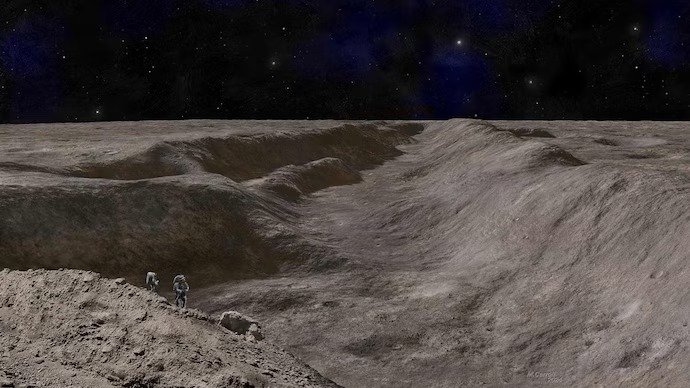The Grand Canyon in Arizona stands as one of Earth’s magnificent natural wonders, shaped over millions of years by the slow erosion force of the Colorado River. Near the moon’s south pole, there are two canyons similar in size to the Grand Canyon, which formed through a very different process.
Recent studies show that these canyons, located in the Schrödinger impact basin on the moon’s far side, were carved out in under 10 minutes by rocky fragments ejected violently when an asteroid or comet impacted the lunar surface about 3.8 billion years ago.
According to geologist David Kring from the Lunar and Planetary Institute of the Universities Space Research Association in Houston, the lead author of the study published in the journal Nature Communications on Tuesday, this impact released approximately 130 times the energy of the existing global stockpile of nuclear weapons.
The researchers charted the canyons utilizing information gathered by NASA’s robotic Lunar Reconnaissance Orbiter spacecraft and subsequently used computer simulations to assess the movement directions and velocity of the airborne debris. The debris could have moved at speeds reaching approximately 2,200 miles (3,600 km) per hour, they discovered.
ALSO READ: Kanye West Calls Wife Bianca’s Sheer Grammys Dress “Art,” Claps Back at Critics
A canyon known as Vallis Planck extends roughly 174 miles (280 km) in length and reaches a depth of 2.2 miles (3.5 km). The second one, named Vallis Schrödinger, measures approximately 168 miles (270 km) in length and has a depth of 1.7 miles (2.7 km).
The effect took place during a time of intense bombardment in the inner solar system by celestial bodies believed to have been dislodged after a shift in the orbits of the solar system’s massive planets – Jupiter, Saturn, Uranus, and Neptune – which is thought to have occurred around that period.
The object that hit the moon is believed to have had a diameter of roughly 15 miles (25 km), which is bigger than the asteroid that impacted Earth 66 million years ago and led to the dinosaurs’ extinction.













